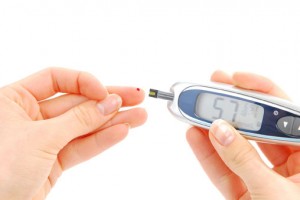What is sleep apnea?
Sleep apnea is a condition where there is an obstruction in the airway during sleep that prevents normal breathing. That obstruction can be either partial (only partly blocking the airway) or complete. This leads to pauses in breathing that decreases the amount of oxygen in the blood. Over time this has damaging effects.
First though let’s talk about what drives you to breathe. In the brain you have sensor areas that detect how much carbon dioxide is in your blood and also how much oxygen you have. Oxygen is what your body uses to produce energy along with some other things and carbon dioxide is the waste product that is left over. As you probably know your lungs bring oxygen into the blood stream and give the carbon dioxide a chance to escape when you breathe out. In this way we take the new oxygen in and blow off the waste carbon dioxide.

Sleep apnea can lead to many serious health conditions including diabetes.
The sensor areas in the brain are constantly monitoring your carbon dioxide and oxygen levels. If your carbon dioxide levels get too high or the oxygen levels too low, the brain sends signals to the breathing muscles to make you take a breath. Normally, because there is little or no restriction to your breathing, it doesn’t take much drive from the brain areas to breathe. However when there is a restriction, the brain has to increase the drive, making the breathing more forceful to try to overcome the blockage. The sensor areas also activate other brain areas to wake you up just in case the blockage is life threatening. Therefore restrictions on your breathing will tend to wake you up or at least bring you up from a deep sleep to a shallower (and less restful) one. Understanding this drive to breathe we can now talk about the sleep apnea types.
Sleep apnea types.
There are three sleep apnea types, central, obstructive and mixed (a combination of central and obstructive).
Central sleep apnea.
Central sleep apnea is less common than obstructive sleep apnea. It is when the brain is not sending signals to the breathing muscles, and as a result the breathing muscles do not move. It can be due to drugs, or certain medical conditions such as stroke or heart failure.
Obstructive sleep apnea.
Obstructive sleep apnea is the more common type. It is when there is a blockage to breathing, despite normal signals being sent from the brain to the breathing muscles.
Mixed sleep apnea.
When someone has both Central and Obstructive forms of sleep apnea.
So if you suffer from sleep apnea you need to address it through treatment. Many options exist out there including dental devices, CPAP machines and natural sleep apnea exercise programs.


